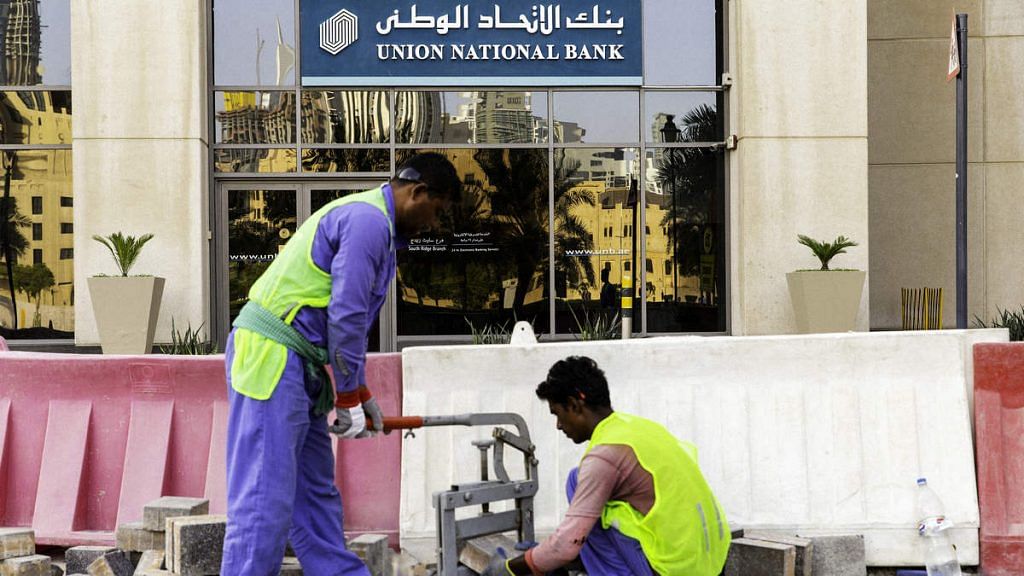The Abu Dhabi labour court’s decision to recognise Hindi as its third official language for the labour workforce to file their complaints or claims prompted several Twitter users to question as to why Hindi, and not Malayalam, was chosen. After all, Malayalam speakers constitute the largest Indian community in the United Arab Emirates.
The answer lies not in the number of speakers but the important function Hindi serves in this linguistically diverse country.
Hindi has emerged as a communication lifeline among the workforce not only from India but also from Bangladesh, Nepal and Sri Lanka. While English serves as a lingua franca among the educated Arab and non-Arab expatriates from different linguistic backgrounds, it is not useful for the large blue-collar labour force consisting mostly of drivers, maids, and construction workers as they do not have the luxury of learning English.
Also read: Modi has done the smart thing refusing UAE’s aid for Kerala. Stop the politics over it
The linguistic diversity in the UAE and other countries of the Gulf Cooperation Council (GCC) — Saudi Arabia, Kuwait, Bahrain, Oman and Qatar — emerged with the rise of oil-based economies during the 1950s, which catapulted this region into an attractive destination for skilled and unskilled labour from different parts of the world, including South Asia.
The expatriate workforce brought not only their labour and skills to the Gulf but also a host of languages such as Urdu, Malayalam, Hindi, Sinhalese, and Bengali. This turned the largely monolingual GCC into an extremely vibrant multilingual social place.
Within this diverse group, Hindi and Urdu have emerged as the languages of wider communication not only among Indians speaking different mutually unintelligible languages, but also among Bangladeshis, Sri Lankans and Nepalis. It is very common to find them communicating with each other in Hindi; and what is even more fascinating is that they have learned the language while working in the GCC.
The authorities in the Gulf are aware of the role that Hindi and Urdu play in facilitating communication between speakers of different languages. Abu Dhabi’s decision to select Hindi for facilitating communication channels between the multilingual labour force and the Arabic-speaking locals, however, has some precedents.
In 2015, the Emirates Identity Authority carried out a survey on its official website asking people to choose which of the four expatriate languages — Urdu, Malayalam, Tagalog and Mandarin — they would like to see on its website. Currently, the UAE government provides lectures and tests to obtain a driving license in Urdu, Hindi, Malayalam, Tamil and Bengali, besides Arabic and English. In Qatar and Kuwait, the mobile service provider Ooredoo’s money payroll service is available in seven languages, including Hindi. In Qatar, many government services are available in Indian languages. The helpline of the Primary Health Care is available in Malayalam and Urdu. The interactive voice response (IVR) of the telecom service provider Vodafone allows customers to choose from Hindi, Urdu, Malayalam and Tagalog.
The presence of so many unrelated languages, however, also created a challenge for inter-group communication. Since Hindi began to be widely used by people whose native languages were as diverse as Arabic, Malayalam, Telugu and Sinhalese, its grammar and vocabulary have undergone a drastic change to give the language a new characteristic of its own.
In linguistics, a language that emerges as such is known as pidgin (or link language), which uses a simplified grammar and a reduced vocabulary with a mix of words from other languages.
The Hindi spoken in the Gulf shows these properties. You will hear sentences like ‘main next month saafar jayega (I will travel next month)’, where the verb jayega, which is used in standard Hindi with the subject ‘he’, has been used here with the subject ‘I’. Also, notice the word ‘saafar’, which is the Arabic verb form for ‘travelling’, and not the noun ‘safar’, meaning ‘journey’. Notice also the English words in the sentence.
Also read: Urdu sounds are disappearing from Bollywood songs
One could also find Malayalis speaking Hindi use numbers in a way that Hindi speakers don’t. Last week, while I was at a market in Doha, I asked a Malayali shopkeeper, in Hindi, how much the fish cost, to which he replied ‘pachaas paanch’, meaning fifty-five (pachpan in Hindi). The coinage of pachaas paanch could be the influence of Malayalam or Arabic or both.
For the Department of Official Language within the ministry of home affairs, whose job is to work for the spread of Hindi, this is an opportunity they could seize to propagate Hindi in labour quarters in the GCC by providing some structured instruction.
The spread of Hindi among non-Hindi speakers from India and other South Asian countries — without any government intervention — is an amazing sociolinguistic phenomenon, which shows that the marginalised workforce in the Gulf, through determination and grit, have learned Hindi at an age when it is very difficult to learn a new language. And their struggle is clearly encoded in how their ‘new language’ is structured. Every time they use their own version of Hindi to communicate, which may look ungrammatical to Hindi speakers from the North, they are also communicating their social as well as linguistic struggle in a way that only people speaking the language of compassion can understand.
The author is Associate Professor of Sociolinguistics, Department of English Literature and Linguistics, Qatar University, Doha.
